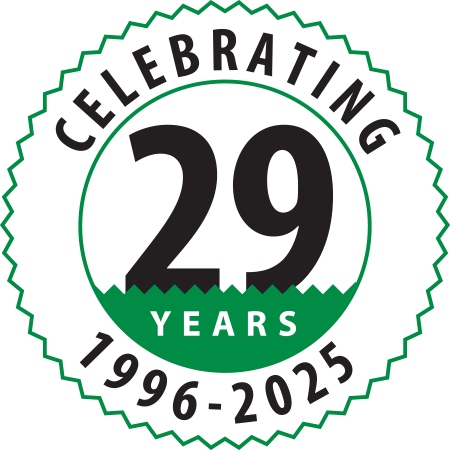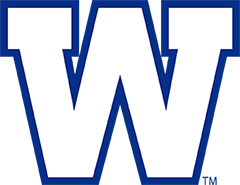
Q
I’m on a limited budget. What would be the best way to invest in my lawn without breaking the bank?
A
To get to an amazing, beautiful, healthy lawn, your lawn needs to be de-thatched so it can breathe and flourish, watered, cut, fertilized, treated for weeds, aerated, and top dressed with nutrients. However, some of these tasks can be done with some good old fashioned elbow grease to off set the cost. A good thatch rake is inexpensive but you will need to invest some back-breaking time removing all the dead debris from the lawn. While a daunting task, it is enormously important as it pays huge dividends in making everything else you do to work most effectively. A poorly raked lawn can ruin your lawn for the entire summer and waste your efforts. An inexpensive lawn mower can cut just as well as an expensive one.
The main difference is merely the bells and whistles like self-propulsion, electric start, and other features you can live without. With good care and frequent mowing, an inexpensive mower will do the same job. Where you can’t pinch pennies is on the fertilizer and weed control. While you can manually dig up weeds for free, when it comes to fertilizer, you tend to get what you pay for. That being said you don’t need to fertilize all year long. If you are on a budget, the most important time to fertilize is spring and early summer. Getting the lawn off to a great start is key. Fertilizing with a high quality product in the spring and again in early summer could get the lawn thick and healthy enough that you won’t need to add much over the balance of the year. Aerating will help maximize anything you input. Water, fertilizer, weed control treatments, top dressing, all will go further with an aeration. An aeration is an inexpensive way to boost everything else you are doing. Top dressing, while beneficial, is a luxury in most cases. Unless the lawn is really struggling, it isn’t necessary. It can add big benefits to the lawn, but if you’re on a budget, consider doing it every 2nd year or start composting in your back yard. Cutting your lawn at a higher height will have the single greatest impact on your lawn and your budget. Leaving your lawn longer will reduce, and potentially even eliminate the need for watering in a good summer. It also improves the strength and thickness of the lawn reducing weed infestation and increasing the density of the lawn.
To further reduce water input, invest in some rain barrels. There is an initial cost but the long term benefits can be significant. Keep the water covered to reduce evaporation and empty it onto the lawn all at once but only when the lawn has become stressed from a long period without water. Small, light watering is extremely detrimental to the lawn.
Q
I would prefer to mulch my lawn but when I do my lawn becomes covered in clippings and truns into a mess. How can I avoid this?
A
The short answer is mow more often. Mulching in Winnipeg in the spring is next to impossible. The challenge is to cut the clippings small enough that they fall into the lawn unnoticed. If clippings are building up on the lawn, making a mess, then the pieces are either too plentiful or too large to settle into the lawn immediately. We have what are called ‘cool-season’ grasses here but don’t let the name fool you.
Cool-season grass goes dormant in the winter, but grows like crazy in summer. Warm-season grasses, found much further south, tend to be coarse, and grow slowly all year long. Warm season grasses may only need cutting once a month in the winter and weekly cutting in the summer. They also tend to be coarse allowing for easy mulching all year long. In spring, our cool-season grass experiences a major growth spurt. In order to mulch in the spring, you may need to cut the lawn two to three times a week in order to keep the mulch small enough
not to be noticed. Even doing so, may still produce a mess as cool season grasses grow with a much thicker density, leaving very little room for clippings to fall through the blades. As we move into summer, the water retention in the blades decreases, thus decreasing the density of the lawn. Combined with slower growth, this now makes it easier to mulch as the growth is slower, allowing you to cut the pieces smaller, and the density is lower allowing those clippings to fall through the blades easier. Ideally, it would be best to bag the clippings in the spring, and hold off on mulching until the summer. Another important factor to consider is that in order to mulch effectively, the clippings have to have enough time to decompose before more clippings are added, otherwise you will end up accumulating more and more mulch which inevitably turns into thatch which will adversely affect your lawn.
In order to decompose fast enough, the clippings need heat and moisture. In the spring, there is insufficient heat to decompose the abundance of clippings. Further south, warm-season grasses can be mulched year round thanks to the warm, humid climate but here in Winnipeg, mulching can only effectively be done in the summer months.
Q
I’m seeing moths all over my lawn. Should I be concerned?
A
Manitoba has thousands of species of moths. Only one is of concern so seeing hundreds of moths on your lawn is not a cause for concern. Many moths will have similar life cycles which means most of them will be emerging from their cocoons around the same time each year. The only moth we are concerned about is the sod webworm. Sod webworms will cocoon over winter and emerge as moths in early summer. They are white coloured moths that many refer to as paper moths since they look like little pieces of paper being tossed about in the air. However, there are many other species that look virtually identical so again, it is not cause for concern to see an abundance of paper moths in your lawn.
In the moth stage, sod webworm moths drop eggs as they fl y over your lawn. These eggs land in the lawn and turn into the sod web worm, a white worm with and orange head approximately one inch long. The roots of your lawn are its main food source. Ultimately the worm will cocoon at the base of the stem on a grass plant and mature into a moth. 99% of the time, the eggs are dropped so far apart that the worms do no visible damage to the lawn. On very rare occasions, a as small dead patches the size of a tennis ball that grow into larger patches. As soon as the damage is noticeable, an easy test can be done to determine if the damage is from sod webworm. Simply tug on the damaged grass and green grass nearby, if the grass lifts up completely with little to no effort, as though the roots were not attached, then odds are good you have sod webworms and they should be readily visible under the grass you just pulled up.
To eradicate the worms and prevent further damage, an insecticide should be applied to the damaged area immediately. Treating the entire lawn is not necessary as the worms are isolated to a specific area. Begin watering immediately as you will likely be able to save most of the damaged area. The sod webworm has disconnected the roots of the lawn which is why it starts to turn brown, but like an un-watered piece of sod, all the parts are still there. Some regular watering will reactivate the plant and help it to re-tap its roots once again. A little seed may be necessary to fill in severely damage areas. The vast majority of sod webworm damage goes unnoticed due to the fact that the eggs often get dropped far apart and even when eggs are concentrated, there is usually sufficient rain to keep the lawn growing and repairing itself as the damage is done. Most sod webworm damage is reported when rain has not occurred for several days and no watering is being done by the home owner.
Strange but true! DID YOU KNOW…
- Over 68,000 lawn mower injuries occur annually?
- The lawn care industry in North America is over $30 billion annually?
- A 50 x 50 lawn can release enough oxygen in a single day for the needs of one person?
- Private lawns make up over 21 million acres in North America?
- The first lawn mower was invented in 1830, by Englishman Edwin Budding?
- Pink Flamingos are the most popular lawn decoration? Around 250,000 of these pink lawn ornaments are sold each year!
- Grass covers 20% of the land on Earth?
- Grass grows on every continent on Earth including Antarctica?
- A beautiful landscape can increase your property value by 15-20%? A neglected landscape can reduce your property value by significantly more!
- Giant bamboo, which can grow up to 151 feet tall, is the largest variety of grass?
- Lawns are three times more productive at producing oxygen than trees?

Tim Muys of Green Blade Lawn Care has over 28 years experience in the lawn care industry.















